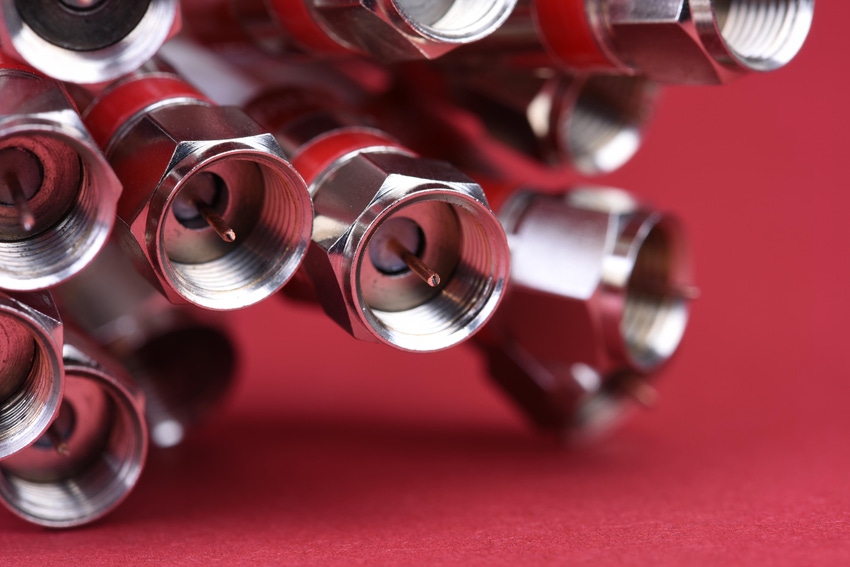Technetix CEO sees 1.8GHz upgrades fueling cable tech growth
Technetix notched a record 2023 and expects 'significant' revenue growth this year. The path ahead is 'all about 1.8GHz' upgrades, particularly in North America, says Paul Broadhurst, CEO of the outside plant specialist.

Toward the end of 2023 and into the start of 2024, the general narrative among broadband network suppliers is that the current malaise in operator spending will recover during the second half of 2024 as customers start refilling their product inventories and get more aggressive with network upgrades.
One company that seems to have bucked the trend – at least through the end of 2023 – is Technetix, the UK-based supplier of outside plant equipment, power gear and wireless technologies.
Aided by sales growth in North America, the privately held company said 2023 revenues rose 33% to 123.5 million pounds sterling (US$155.46 million) and gross profit of £35.8 million ($45.11 million). Revenues for the Americas region surged 282%, in 2023, to £62.6 million ($83.44 million). The company expects to achieve "significant" revenue growth into 2024.
"The big mover for us is the growth in the US," Paul Broadhurst, president, founder and Group CEO at Technetix, said.

Paul Broadhurst, president, founder and Group CEO at Technetix. (Source: Technetix)
Technetix, he said, has been gaining traction in the region with a handful of operators, including a yet-to-be named Tier 1 in Canada and another in the US. Broadhurst noted that Technetix's growth into the sector was aided in part by Cisco's gradual exit from the cable hardware market.
The company's growth across the Americas has also been helped by Technetix's 2022 acquisition of Lindsay Broadband, a move that dealt Technetix into the network power game and an expansion into wireless products, including Wi-Fi gateways and mini-cells. More M&A might be on the way. Technetix "is pursuing a number of major strategic and tuck-in opportunities," the company said in its report on 2023 results.
Focus on 1.8GHz upgrades, 'ultra high-split' potential
Broadhurst said the majority of Technetix's business is now focused on the Americas, with a heavy concentration in North America.
But the bigger impact to overall growth is the shift toward outside plant upgrades, including expanding the hybrid fiber/coax (HFC) plant to 1.8GHz technology. That will expand HFC network spectrum from legacy ceilings in the neighborhood of 750MHz, 860MHz and even 1GHz. A move to 1.8GHz is also a step toward the extended spectrum option for DOCSIS 4.0 network upgrades.
Broadhurst notes that cable operators have been splitting nodes for years to generate capacity, but the current look toward 1.8GHz represents the first potential major investment in the outside HFC plant in 20 years.
Operators are starting to migrate to all-IP by shutting down those legacy QAM video platforms in order to free capacity for DOCSIS but also exploring ways to boost outside plant transmission to 1.8GHz.
Technetix entered production last year with a DOCSIS 4.0-ready 1.8GHz amps, multi-taps and passives that support an "ultra high-split" that would put operators in position to enable an upstream to a range of 5GHz-684MHz (if they ever really needed it). That would represent a jump from a "mid-split" (5GHz-85MHz) to a "high-split" (5MHz-204MHz) upgrade. Borrowing a page from a European playbook aimed at lowering labor costs, the new wave of 1.8GHz amps from Technetix are "smart" in that they support AI-assisted automation and the ability to be set up with a smartphone or tablet, Broadhurst said.
He notes that outside plant sales tied to high-split upgrades on 1.2GHz HFC plant were solid in 2023, but expects 2024 will be "all about 1.8GHz," particularly in North America.
Part of the reason? The cost of 1.8GHz technology is nearly on par with 1.2GHz gear. Operators might not be ready to push capacity to 1.8GHz, but the low cost delta gives them a way to future-proof the HFC network for the next 15 to 20 years, he said.
Broadhurst said the biggest "breakthrough" in 1.8GHz tech over the last year has been the development of upgrade plates that can be slotted into the existing housings of legacy amps from the likes of Motorola, Cisco, Regal and Magnavox.
"It's all about saving labor. You don't want to resplice cable. This allows an operator to change the plate and upgrade to 1.8GHz," Broadhurst said. "The [1.8GHz upgrade] plate has been quite a difficult technological solution. But we managed to crack it in the last 12 months."
The broader opportunity could be sizable for Technetix, ATX Networks, Teleste and other suppliers focused on 1.8GHz technology. Of that group, Teleste, which recently beefed up its focus on the North American cable sector, announced last week that it notched customer approvals and field deployments on DOCSIS 4.0-compliant 1.8GHz amps.
Targeting competitive 'hot spots'
Broadhurst estimates that in the US alone, 80 million to 85 million homes passed could translate to 10 million amplifiers and 50 million multi-taps that are potential candidates for 1.8GHz upgrades. While it's unlikely that all of them will be upgraded, Broadhurst believes there's a significant opportunity among "hot spots" where cable operators face tough broadband competition.
There's likely less opportunity for 1.8GHz upgrades in Europe, which has a lot of underground plant.
Operators with significant existing ducting networks, such as Virgin Media O2, are migrating to fiber relatively cost effectively. However, Broadhurst sees some potential for HFC upgrades in markets such as the Netherlands and Germany that have direct-buried plant but don't have a network of ducts that can ease a path to fiber-to-the-premises upgrades.
About the Author(s)
You May Also Like




_International_Software_Products.jpeg?width=300&auto=webp&quality=80&disable=upscale)







